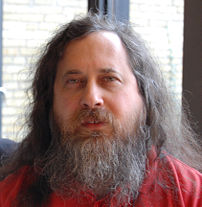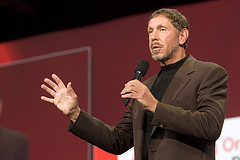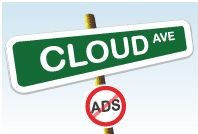
Image via Wikipedia
Are Open Source and Cloud Computing anachronistic enemies? You’d think so, if you read GNU creator Richard Stallman’s interview in The Guardian:
Cloud computing was simply a trap aimed at forcing more people to buy into locked, proprietary systems that would cost them more and more over time.
"It’s stupidity. It’s worse than stupidity: it’s a marketing hype campaign,"
Sure, there’s a lot of marketing hype as it is typical with any major technological advancement, especially as it reaches the peak of its hype cycle. But I think Stallman loses sight of who the “enemy” is.
Related articles by Zemanta
- Stallman on cloud computing: Run, it’s a trap! [The Olds]
- No Silver Linings!
- Are Cloud Computing and Open Source Arch-Enemies?
- Richard Stallman vs Cloud Computing
- Stupid Redux : Old Man GNU Yells at Cloud
- Hey hey, you you – get off of my cloud
- Cloud computing is a trap, warns GNU founder Richard Stallman (Bobbie Johnson/Guardian)

![Reblog this post [with Zemanta]](https://www.zoliblog.com/wp-content/uploads/HLIC/54e6a3db43b098ecbf5db09e027cb1c1.png)


![Reblog this post [with Zemanta]](https://www.zoliblog.com/wp-content/uploads/HLIC/1e888c58c2f8097a76d183db620f05dd.png)
 I don’t claim to be an expert economist, so
I don’t claim to be an expert economist, so  )
) On my personal blog I don’t have to be as politically correct as on CloudAve, so here’s my summary: they tried SaaS, could not crack it, so concluded the market as a whole did not matter – a strategic mistake.. or… well, as they say, a
On my personal blog I don’t have to be as politically correct as on CloudAve, so here’s my summary: they tried SaaS, could not crack it, so concluded the market as a whole did not matter – a strategic mistake.. or… well, as they say, a  see the benefits of a
see the benefits of a  (OK, I sinned. Mea Culpa. I’ve just cross-posted an entire article, which is not the best behavior. But it’s not every day that I
(OK, I sinned. Mea Culpa. I’ve just cross-posted an entire article, which is not the best behavior. But it’s not every day that I  )
) P.S. The CloudAve platform is not exactly in nice order yet. It’s work-in-progress.
P.S. The CloudAve platform is not exactly in nice order yet. It’s work-in-progress. 



 Then there’s the issue of The Gadget. I believe the iPod at the first conference was just more-then-generous swag. The iPhones handed out at the second conference had an integral part at the event: several applications released specifically for Office 2.0 allowed participants to interact with each other, navigate the schedule and find sessions. This time all paid participants will receive a the HP 2133 Mini-Note PC.
Then there’s the issue of The Gadget. I believe the iPod at the first conference was just more-then-generous swag. The iPhones handed out at the second conference had an integral part at the event: several applications released specifically for Office 2.0 allowed participants to interact with each other, navigate the schedule and find sessions. This time all paid participants will receive a the HP 2133 Mini-Note PC.
Recent Comments